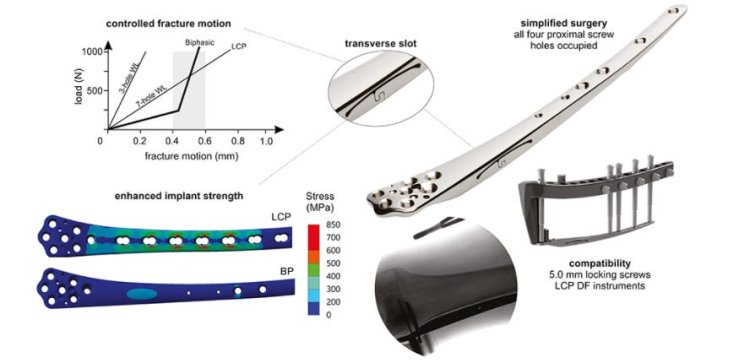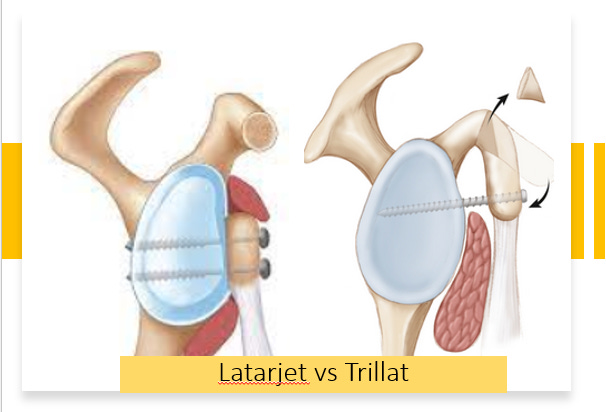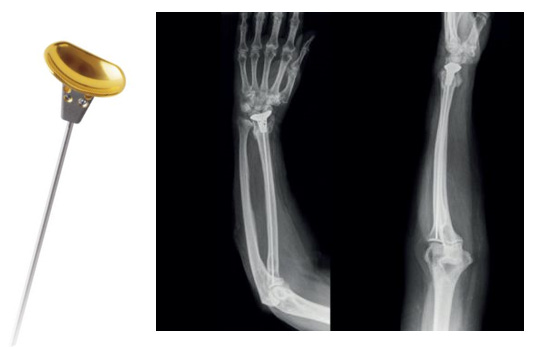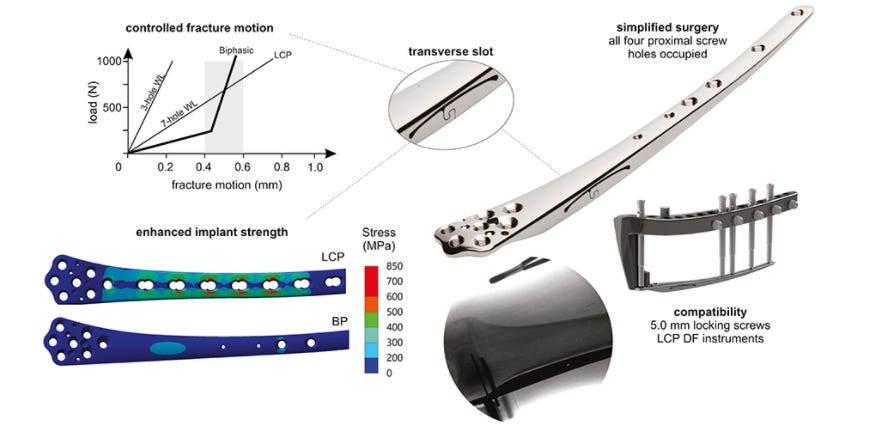Biphasic Plate – for Distal Femur Metaphyseal Comminution

Hot from AO’s Ovens…
Fancy metaphyseal comminution? Thinking about fixing it with a nice, locked bridge plate? Yes, that’s the dream. But what about metaphyseal comminution in a femur? Not so much of a dream. Those failed implants would agree.
Problem no more…
We bring you fresh from AO incubator, - Biphasic plate
The biphasic plate has a transverse S-shaped slot with increased thickness in the supracondylar region. Increased plate thickness leads to high strength and stiffness at higher loads (rigid phase), decreasing the risk of implant failure. The slot provides flexibility to stimulate callus formation at lower forces associated with partial weight-bearing (flex phase). The concept, hence, intends to confine interfragmentary motion to a desirable range independent of functional loading. The “S” shape of the slot prevents it from twisting and opening and thus ensures the implant resists forces resulting from reverse (valgus) bending and torsion of the plate. Currently, in-vitro testing results are out for a Distal femur plate and have been classified as a type IIB medical device. Awaiting further human trials.
It has a bi-linear response – 55% more complaint at low loads and 476% stiffer at higher loads than the conventional DF-LCP fixed in a similar construct. This allows to ‘pre-program’ the strain at the fracture site - Controlled strain within the desired range even with partial or full weight-bearing.
While we only have a distal femur plate for now, with a limited use case, it seems not difficult to adopt the idea to other load-bearing implants. Watch this space for further updates.

















